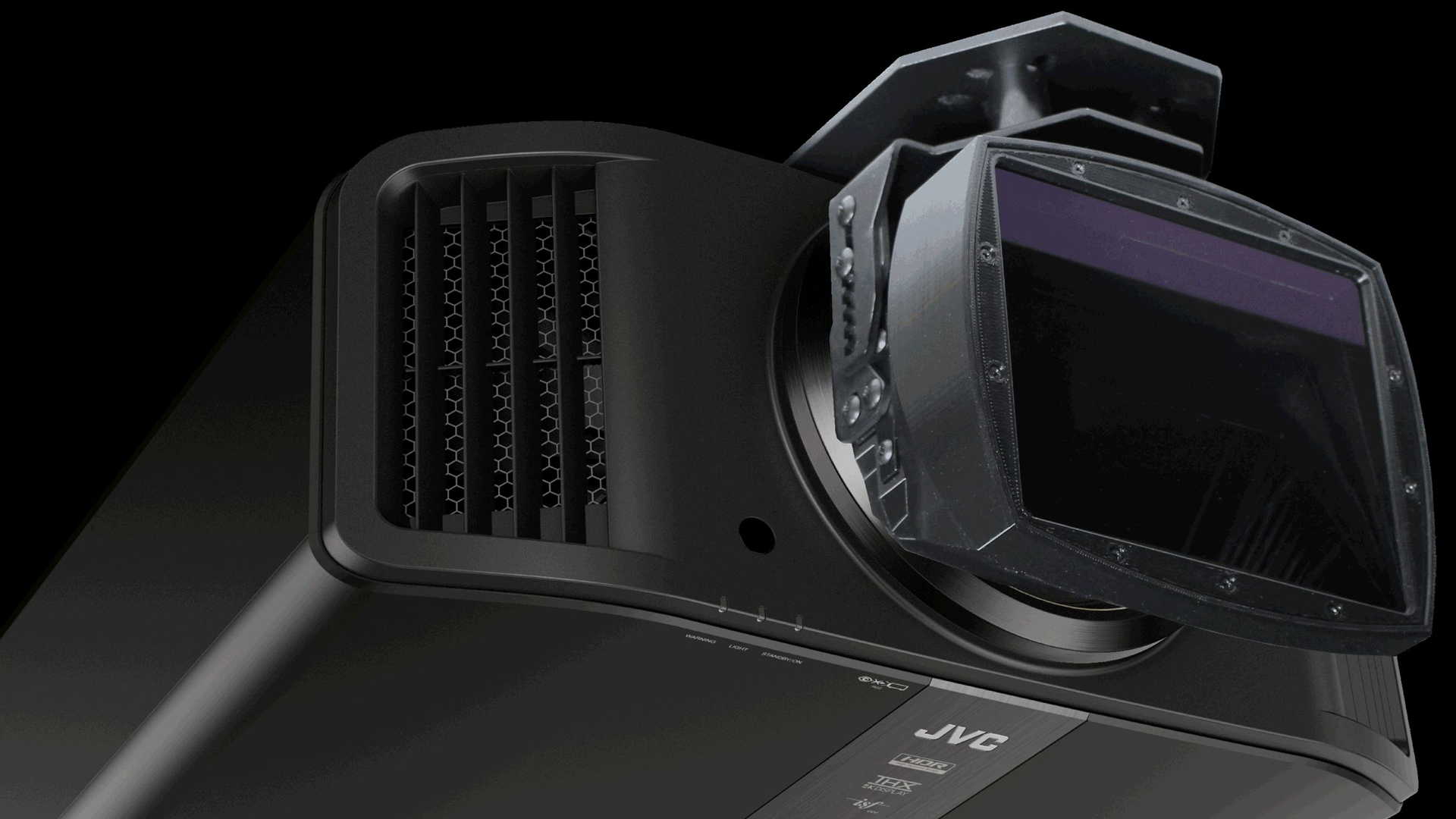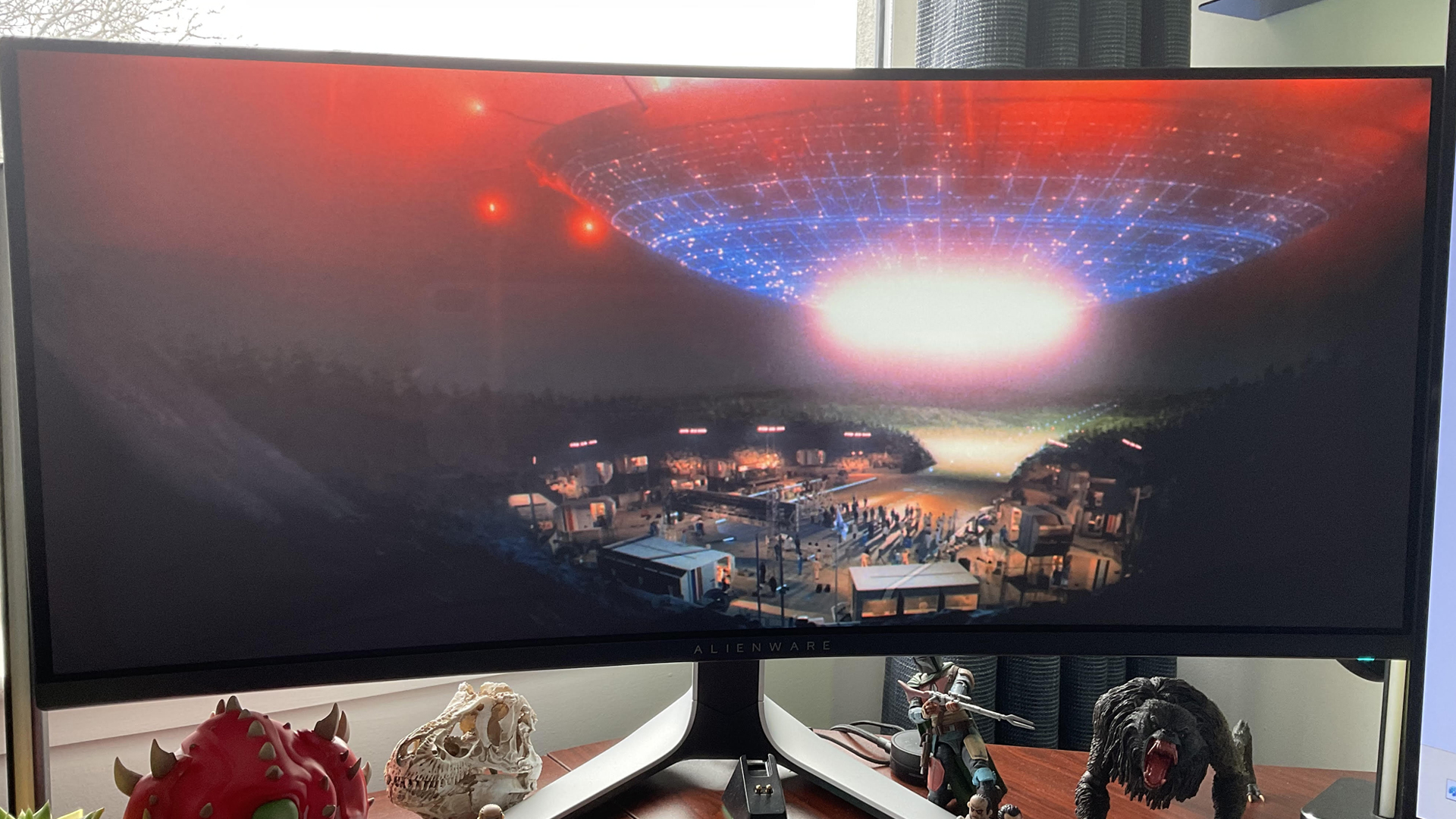Here’s one way to get rid of black bars in ultra-wide movies: use a projector
Nix that dreaded 'letterboxing' dead space in movies

I hate looking at black bars in movies more than I hate mushrooms. And I’d rather have a bath with a great white shark than eat a portobello ‘shroom. While I’ve previously begged for the return of ultrawide 4K TVs, there’s actually a ready-made way to eliminate black bars in 21:9 content without cutting off the edges of the image. Namely, by watching movies on a projector.
They may hold only a tiny market share next to the best TVs in 2023, but projectors have rarely been a more attractive A/V alternative. Not only are they cheaper than ever before, but the best projectors can provide a true ultrawide movie experience.
Getting the sort of 21:9 aspect ratio on a projector that you’d see from a movie in the cinema can be achieved in several ways. With older projectors, you can install an external anamorphic lens to recreate the correct ‘CinemaScope' aspect ratio most movies are filmed in. By contrast, certain newer projectors from the likes of Sony and JVC have these lenses built in. Many modern projectors also boast anamorphic zoom modes that let you stretch a film’s aspect ratio.
Lens pals

What exactly is an anamorphic lens, though? In short, it’s a special lens that can stretch or compress an image either horizontally or vertically to help restore an ultrawide movie’s correct, intended aspect ratio. As noted above, some projectors have these lenses built in, while companies like Panamorph also make external anamorphic lenses that can be attached to projectors.
But let’s back up for a second to quickly talk about aspect ratios and why black bars in movies occur in the first place. The reason you’re forced to stare at those dark horizontal columns across your screen is down to the fact you’re watching 21:9 content on a 16:9 widescreen TV. To get slightly techier, the vast majority of movies have historically been filmed in 2.35:1 or slightly above; the aspect ratio that matches the dimensions of an ultrawide display.
To ensure the entirety of a 2:35:1 or 2:4:1 image will fit on a 16:9 screen, the picture is shrunk down in a process known as ‘letterboxing’. And that’s where my mortal enemies, those dreaded black bars, come into play.
The reason you don’t see black bars pop up on your TV screen when watching most of your favorite shows is because they were filmed in a 16:9 aspect ratio. Though it’s worth noting that for the past few years, streaming services like Netflix have released a wide variety of content in a 2.0:1 format. This aspect ratio is a more natural fit for a widescreen TV, and though black bars still appear, they’re smaller than what you’d see watching 2.35:1 content.
Get daily insight, inspiration and deals in your inbox
Sign up for breaking news, reviews, opinion, top tech deals, and more.
Now admittedly, many TVs will let you nix black bars while watching movies. The problem is, this is always achieved in a slightly compromised way. Most modern 4K TVs will sport some sort of ‘vertical zoom’ feature that lets you increase the size of the picture, eliminating black bars but, in many cases, also cutting off the edges of the image. As I said, compromised.
Zoom for improvement
My current solution is a little better, but it’s still less than ideal. On my LG C2 OLED, the TV’s vertical zoom feature lets you stretch the image without losing the sides of the picture. The result is a viewing experience where you get the entire image… just one where every character is stretched out to the point they look like they haven’t eaten a carb in a decade. Again, it’s a passable solution, but it’s far from ideal.
The great thing about projectors that support anamorphic features is that they let you maintain a movie’s correct aspect ratio without compromise. This means you’re spared from looking at the stretched images I’ve long since had to make peace with on my OLED.
A proper anamorphic projector lens will adjust the picture without compromising resolution, leading to a brighter image that doesn’t lose pixel density. And that latter point is another thing that gets me unreasonably annoyed about watching ultrawide content on a 16:9 TV. When those black bars appear, you’re losing a whole lot of pixels and screen real estate.
If I hadn’t spent a financially ruinous amount on the 77-inch OLED colossus that’s currently hugging my living room wall, I’d seriously consider buying one of the best 4K projectors. Whether achieved through an external anamorphic lens or through anamorphic zoom features, projectors are able to provide an experience that’s far more faithful to the CinemaScope format than even the best TVs.
Dave is a freelancer who's been writing about tech and video games since 2006, with bylines across GamesRadar+, Total Film, PC Gamer, and Edge. He's been obsessed with all manner of AV equipment ever since his parents first bought him a hideously garish 13-inch CRT TV (complete with built-in VCR, no less) back in 1998. Over the years he’s owned more plasma and OLED TVs than he can count. On an average day, he spends 30% of his waking existence having mild panic attacks about vertical banding and dead pixels.
